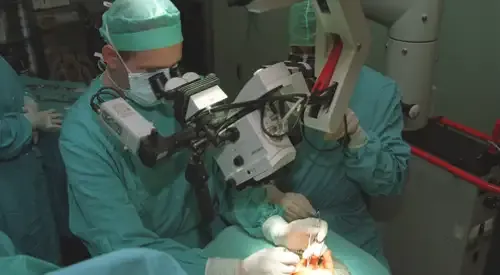Shoulder Instability
"Arthroscopic techniques, in most cases, are highly recommended, safe and comfortable for patients, and can be performed without hospital admission because they are very little painful"..
DR. ANTONIO ARENAS
SPECIALIST. ORTHOPEDIC SURGERY AND TRAUMATOLOGY DEPARTMENT

Shoulder instability (glenohumeral) is the excessive and abnormal movement between the head of the humerus and the glenoid cavity of the scapula.
The shoulder joint is a ball-like joint placed in a shallow cavity.
The stability of the shoulder is provided by elements of the joint, called stabilizers, which keep the head of the humerus attached to the glenoid socket of the scapula.
Shoulder instability is also defined as the exit of the humeral head from the glenoid cavity of the scapula. If the exit is total it is called dislocation and if it is partial, subluxation.

What are the symptoms of shoulder instability?
The most common injuries that occur are:
- Ripping of the labrum and glenohumeral ligaments of the scapula, called Bankart's injury.
- Lengthening of the shoulder ligaments produced by a forced stretch that will cause them to become lax.
- Significant fracture of the glenoid margin.
- In older patients, a large rupture of the shoulder tendons, of the rotator cuff.
The most common symptoms are:
- Blockage of the joint.
- Shoulder pain.
- Impossibility to move it.
Do you have any of these symptoms?
You may have a dislocation or subluxation of the shoulder
What causes an unstable shoulder?
Violent trauma resulting in a dislocation or subluxation of the shoulder can cause various injuries within the joint that may lead to future episodes of joint instability.
Frequently, the direction of the dislocation is anterior, with the humeral head coming out in front of the glenoid socket.
The forced and extreme movements of the shoulder, which are very frequent in throwing sports or swimming, cause continuous stretching of the shoulder ligaments and eventually cause their stretching, leading to laxity and instability of the joint.
The patient feels pain in the shoulder when certain positions are forced, sometimes clicking, and may also have the sensation that the joint is "popping out of place.
The shoulder is unstable in several directions: anterior, inferior and/or posterior.
There are people who congenitally have loose ligament tissue that conditions the appearance of instability.
How is an unstable shoulder diagnosed?

The diagnosis is based on the physical examination of the patient and the performance of an X-ray of the shoulder.
No further tests are usually necessary.
How is shoulder instability treated?
Patients with atraumatic instability respond well to conservative treatment.
They require rehabilitation to strengthen the rotator cuff muscles of the shoulder as well as the perispinal muscles.
Patients who do not respond correctly to rehabilitation treatment carried out over several months will be advised to have the instability repaired either arthroscopically or through classic open surgery.
Patients with a traumatic instability will have their existing anatomical lesions repaired through shoulder arthroscopy or classic open surgery, since conservative treatment is not very effective.
- If the ligaments and the labrum are torn from the edge of the glenoid cavity, they will be reinserted.
- The lengthening of the ligaments due to plastic deformity is performed by puckering and retensioning them.
- Torn rotator cuff tendons, a frequent cause of instability in older patients, should be repaired.
Where do we treat it?
IN NAVARRE AND MADRID
The Department of Orthopedic Surgery and Traumatology
of the Clínica Universidad de Navarra
The Department of Orthopedic Surgery and Traumatology covers the full spectrum of congenital or acquired conditions of the musculoskeletal system including trauma and its aftermath.
Since 1986, the Clinica Universidad de Navarra has had an excellent bank of osteotendinous tissue for bone grafting and offers the best therapeutic alternatives.
Organized in care units
- Hip and knee.
- Spine.
- Upper extremity.
- Pediatric orthopedics.
- Ankle and foot.
- Musculoskeletal tumors.

Why at the Clinica?
- Experts in arthroscopic surgery.
- Highly qualified professionals who perform pioneering techniques to solve traumatological injuries.
- One of the centers with the most experience in bone tumors.




















